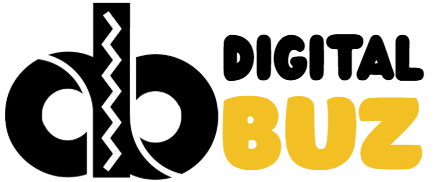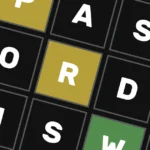Introduction to NYT Connections
With the changing times in online brain games, NYT connections has created a niche for itself. Developed by The New York Times, the game requires players to discover connections among sets of words. Unlike conventional word searches or crosswords, Connections relies on pattern recognition, reasoning, and outside-the-box thinking.
It has simplicity and depth in a fashion that keeps you interested and in a suspense of guessing. If you like puzzles that challenge your critical thinking without overdoing the complexity, NYT Connections might be your new fixation.
What Is NYT Connections?
NYT Connections is a daily word puzzle in which players need to find four sets of four words with a shared connection. These connections are anything:
Synonyms
- Wordplay
- Categories (such as fruits, musical instruments, or sports terms)
- Phrases or idioms
- Homophones
- Pop culture references
After you determine the connections, you sort the words into the respective categories. Each category needs to have exactly four words, and the game is over when all sixteen are sorted properly.
The Origin and Rise of NYT Connections
NYT Connections is one of The New York Times’ attempts to extend its puzzle and games section. Following the success of The Mini Crossword and Wordle, NYT Connections was introduced in 2023 and was an instant hit with crossword enthusiasts.
The game was created to promote lateral thinking over direct vocabulary memorization. It also demonstrates The New York Times’ dedication to inclusive, entertaining content that promotes everyday learning and enjoyment.
How to Play NYT Connections: Rules and Format
The format of NYT Connections is simple to understand but difficult to master.
The Setup
16 words are displayed in a 4×4 grid.
Your task is to categorize them into four groups of four.
All four correct groupings must have some common tie.
The Goal
Find all four correct groupings.
You have four opportunities to make incorrect groupings.
Upon four incorrect groupings, the game is over.
Categories Are Color-Coded
When a group is properly identified, it vanishes from the grid and is color-coded:
- Blue – Medium level
- Yellow – The simplest group
- Green – The second simplest
- Purple – The most difficult and abstract
This color scheme provides feedback to the players and encourages them to reflect on the remaining sets.
Why NYT Connections Is Loved by People
There are a few reasons for this game’s popularity:
It is mind-stimulating: Unlike regular quizzes, the game demands lateral thinking.
It’s addictive and brief: One puzzle per day keeps the mind active without devouring much time.
It is social: Players usually exchange scores or debate groupings on the internet.
It’s surprising: Unpredictable themes and categories keep players on their toes.
The game is also suitable for the whole family, so it is a pleasant challenge for people of all ages.
The Psychology Behind Connections’ Success
NYT Connections leverages strong cognitive and emotional motivators:
Pattern finding: People enjoy seeing order in disorder. Connections leverages that.
Curiosity: Every puzzle generates mystery. What connects these words?
Satisfaction from problem solving: Finishing a puzzle releases a burst of dopamine, just like figuring out a puzzle.
Scarcity effect: There is only one game published each day, building anticipation.
These psychological hooks make the game persistently appealing.
Common Types of Connections You’ll Find
Knowing common themes can make you more skilled at the game. The following are a number of often employed types:
1. Synonyms
Words that have the same or similar meanings (e.g., sad, gloomy, somber, downcast).
2. Categories
Categories such as birds, countries, flowers, or desserts.
3. Homophones
Words that are similar in sound but not in meaning (e.g., pair, pare, pear, pare).
4. Puns and Wordplay
Innovative combinations based on twin meanings.
5. Phrases
Segments of popular sayings or idioms (e.g., break, leg, arm, neck – “break a ___”).
6. Pop Culture
Titles of television shows, celebrity characters, or song titles.
Knowledge of these patterns contributes to speed and accuracy enhancements.
Strategies to Solve NYT Connections
If you want to improve, try applying a few specialist techniques:
1. Begin With Blindingly Obvious Pairs
Look over the list and identify two or three that obviously go together. Use them as references to look for the fourth.
2. Banish Decoys
The game usually contains words which would fit into several categories. Identify and put these aside until you’re more confident.
3. Think Abstractly
Don’t just consider literal meanings. Think about metaphors, slang, or double meanings.
4. Use Visual Grouping
Write the words out or think them through internally to look for patterns.
5. Don’t Rush
Although the game is brief, take a moment to consider potential groupings before making a commit.
Examples of NYT Connections Puzzles
Let’s dissect a few examples:
Example 1
Words: Orange, Apple, Banana, Grape
Connection: Fruits (Yellow group – straightforward)
Example 2
Words: Cold, Call, Feet, Turkey
Connection: “Cold” phrases (Blue group – medium)
Example 3
Words: Bass, Tear, Bow, Lead
Connection: Words with multiple pronunciations (Purple group – hard)
All examples illustrate the diversity of logic employed in these puzzles.
In the Classroom Using NYT Connections
Teachers are incorporating NYT Connections as a learning device. It encourages:
- Vocabulary development
- Critical thinking
- Collaboration
- Pattern recognition
Teachers can even design unique Connections puzzles for spelling words, science vocabulary, or history concepts.
Community and Social Sharing
Similar to Wordle, NYT Connections also prompts users to share the results. It does not utilize Wordle’s colored blocks, though. Instead, players usually share a screenshot or the most challenging group they encountered.
Active communities on websites such as Reddit, Twitter, and Discord share strategies, post alternate puzzles, and share witty clues.
Advantages of Daily Play in NYT Connections
Playing Connections every day enhances a variety of cognitive abilities:
Memory: Remembering meanings of words and relations between them.
Flexibility: Adjusting to altering patterns.
Attention to detail: Closely following subtle cues.
Vocabulary: Exposing oneself to new vocabulary and turns of phrase.
It’s not only a game—far from it—it’s a daily workout for the brain.
How NYT Connections Differs from Wordle and Other NYT Games
Whereas Wordle emphasizes spelling and inference, Connections is more abstract. Other NYT games are:
The Mini Crossword: Speed word puzzles.
Spelling Bee: Identify as many words as possible from a set of letters.
Tiles: A picture matching game.
NYT Connections is unique in merging words, logic, and abstract thinking into a fast, rewarding format.
Making Your Own Connections Puzzle
Making your own puzzle is an enjoyable way to see how it works. Here’s how to give it a try:
Select a category (e.g., animals).
Select four words (e.g., lion, tiger, bear, wolf).
Chose three additional groups, each containing four different words.
Insert a few decoy words to make it more challenging.
Combine the 16 words and share the puzzle with friends or relatives.
This develops thinking creatively and demonstrates how puzzle makers create each day’s challenge.
Challenges of Playing NYT Connections
Even experienced players encounter challenges:
Unclear groupings: Certain words appear to belong to more than one theme.
Deception words: Homonyms or cultural allusions can mislead.
Thinking too much: Certain puzzles are simpler than they look.
It helps to remain calm and follow your gut.
Where to Play NYT Connections
- NYT Connections can be played:
- On The New York Times website
- Within the NYT Games app (iOS and Android)
- As part of a subscription package, though some games are free
- Regular updates and an uncluttered interface ensure a smooth experience.
Future of NYT Connections
As its popularity increases, NYT Connections may add:
- Themed puzzles (e.g., holiday, trivia-based)
- User-generated content
- Multiplayer modes
- Timed challenges
The New York Times has shown interest in growing its puzzle library, and Connections could lead the next wave.
Final Thoughts: Why NYT Connections Deserves a Spot in Your Day
NYT Connections marries logic, language, and creativity into a tidy, addictive experience. It’s ideal for anyone who likes solving puzzles but doesn’t just want definitions or crosswords. The game forces you to think outside the box, pay attention to patterns, and see how words connect beyond literal meaning.
In an ever-turbulent sea of digital distractions, Connections is a beacon of focus, challenge, and delight. Whenever you play in the morning over coffee or during a break at lunch, it ignites a spark in your day.
Next time you’re online, spend five minutes trying out the puzzle. You may find a passion for words—and win today’s grid.



